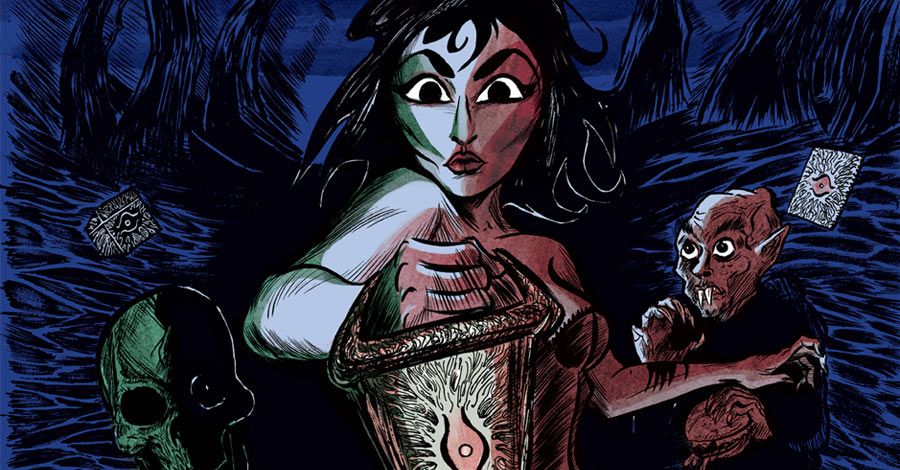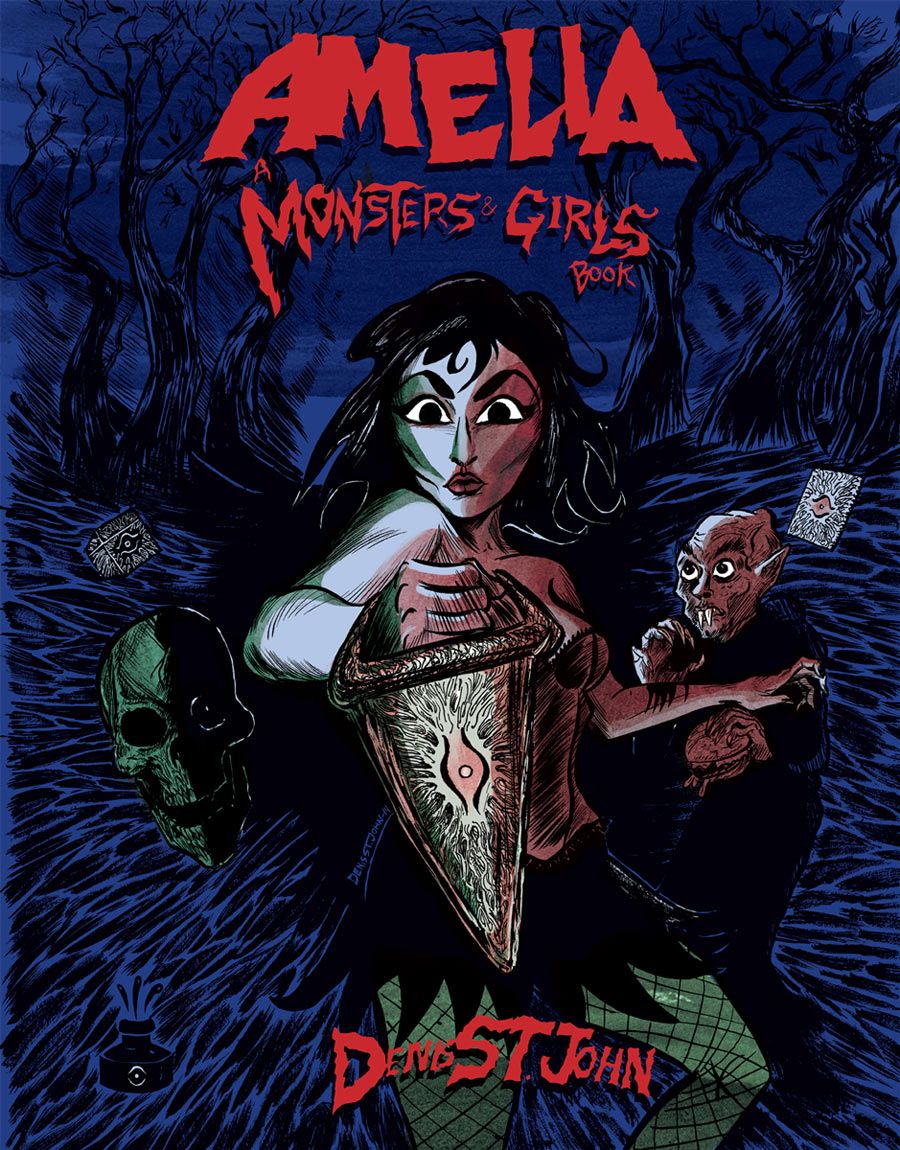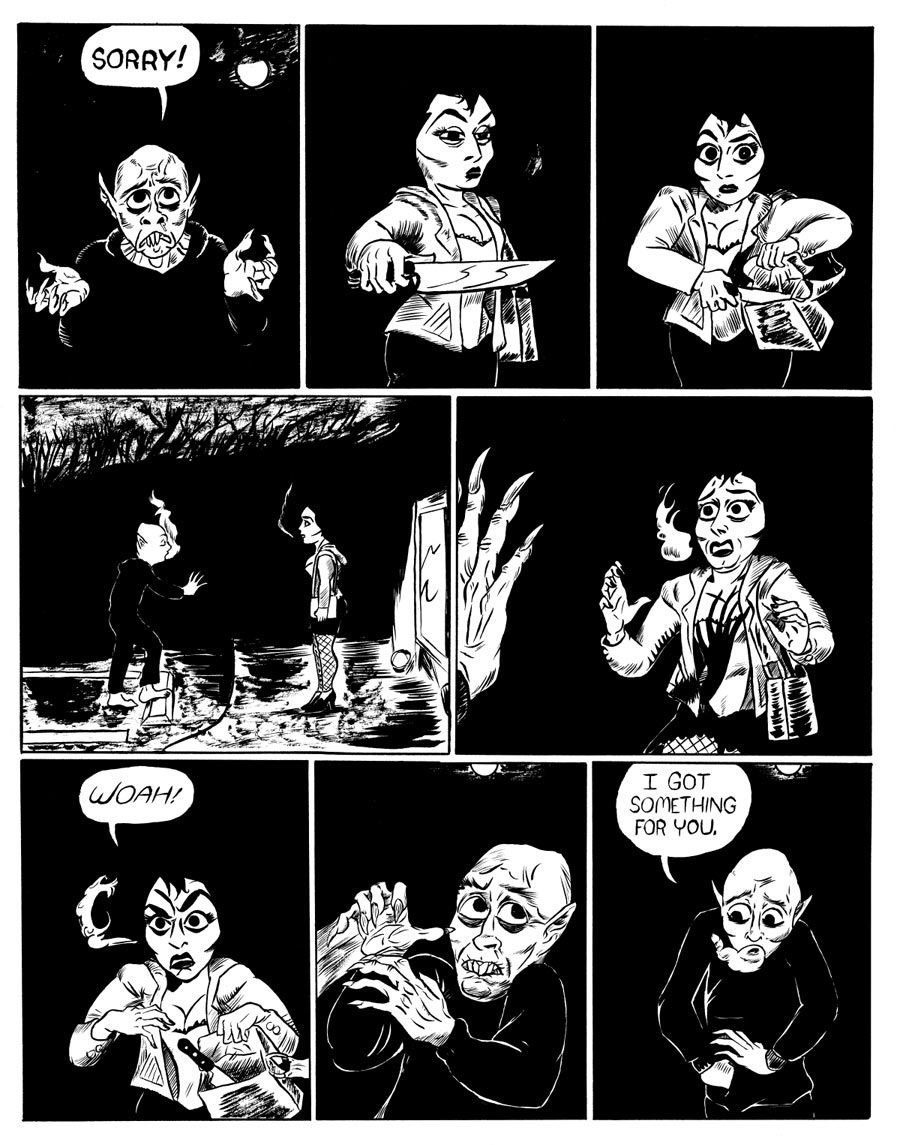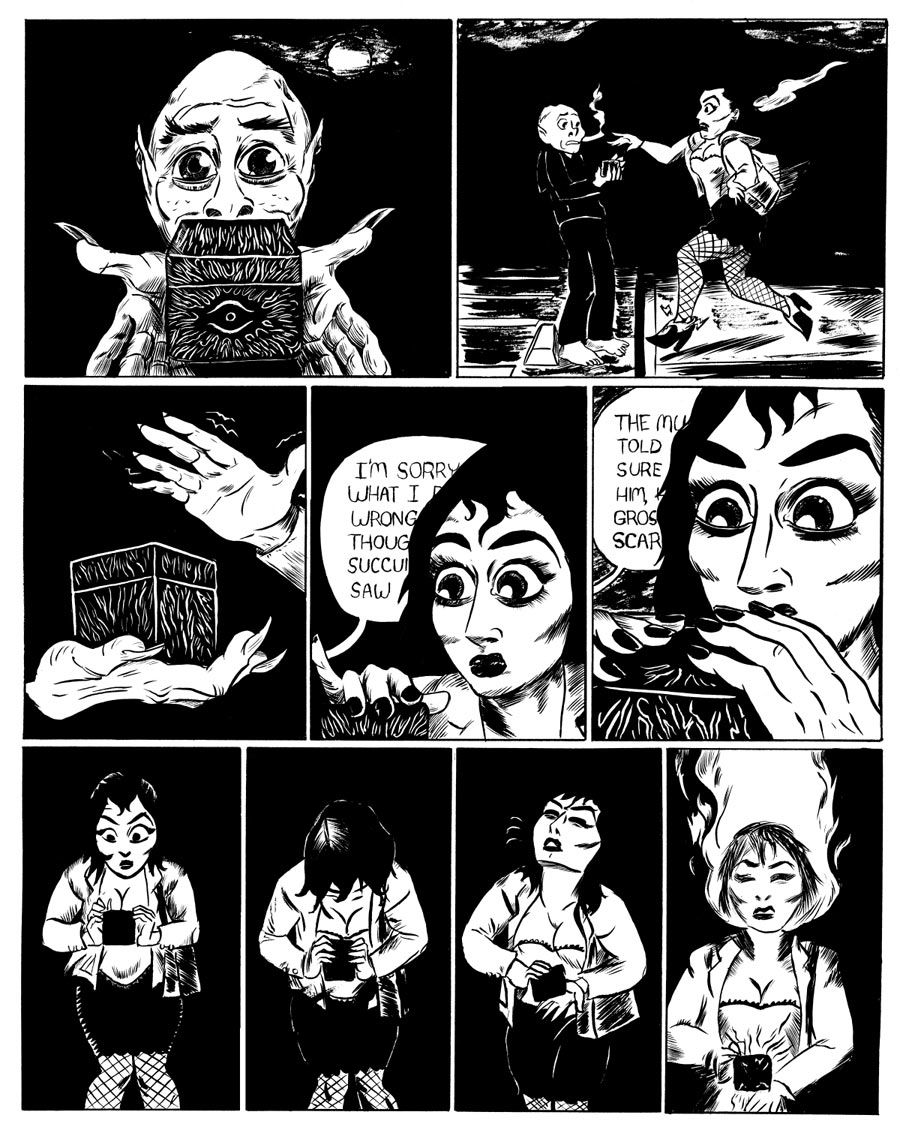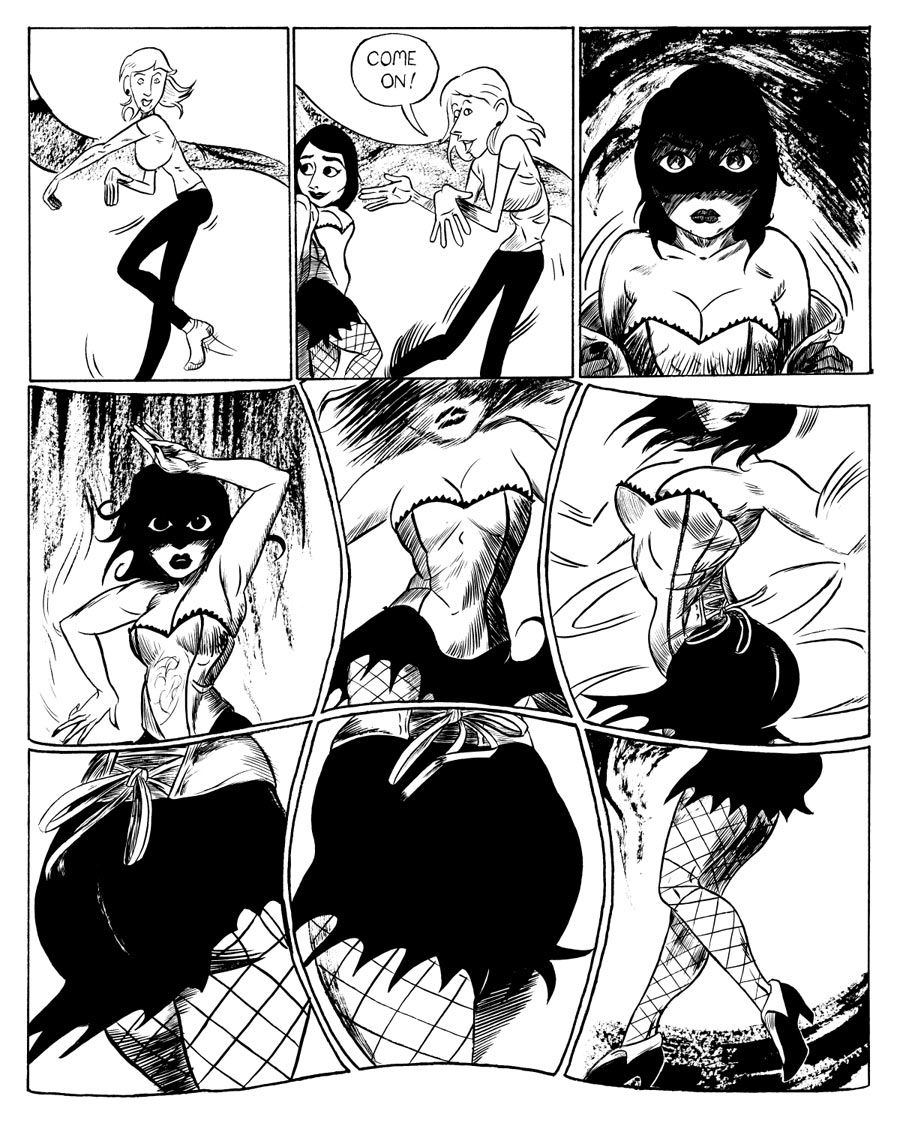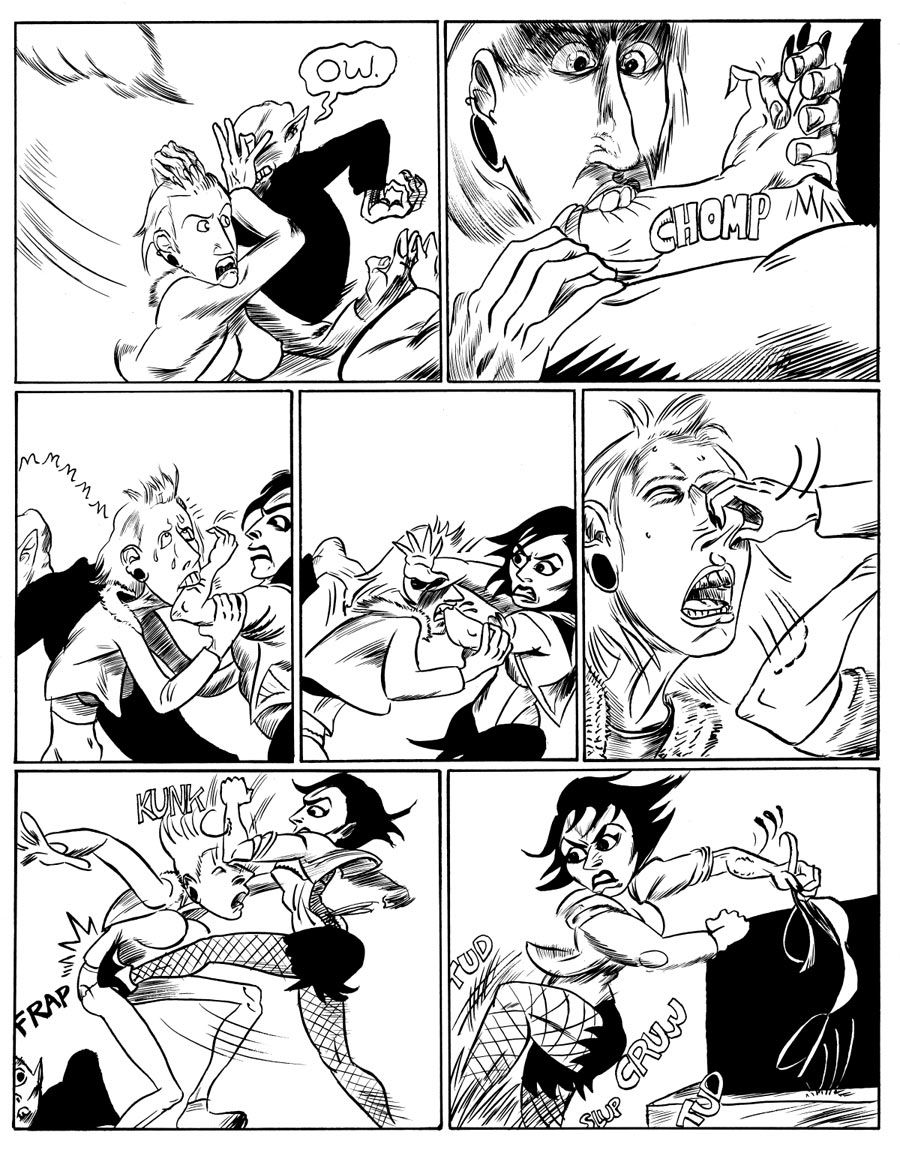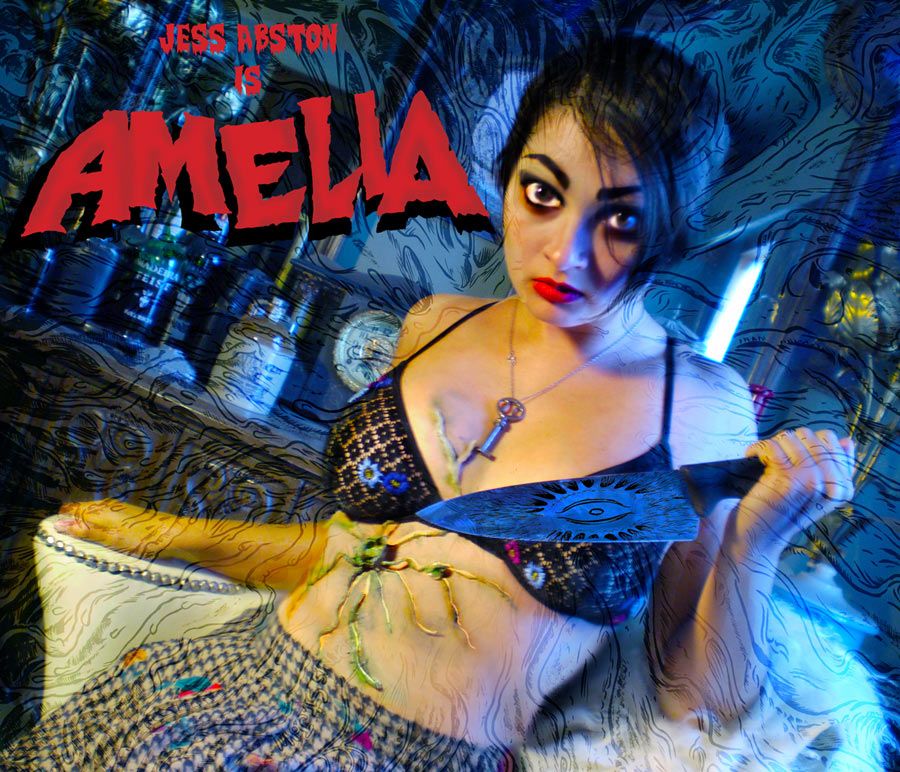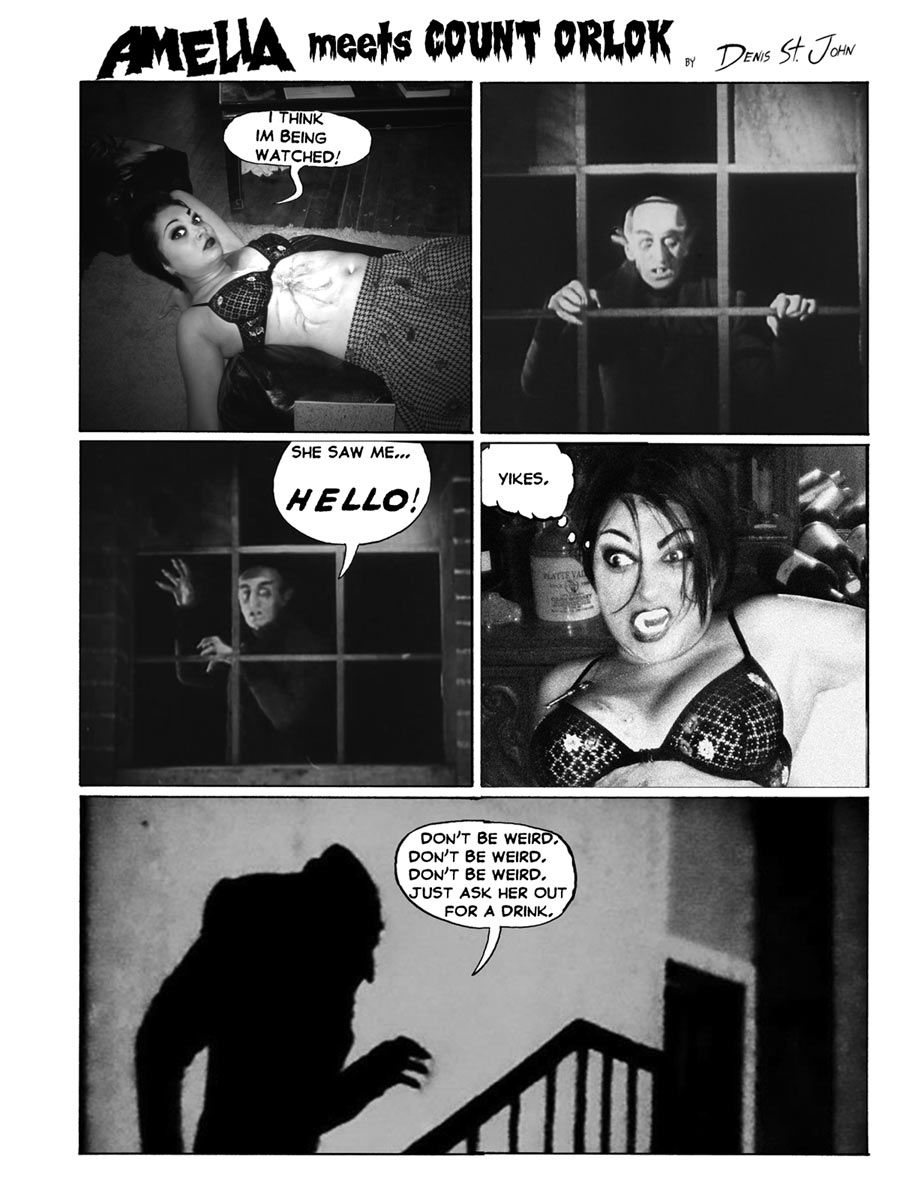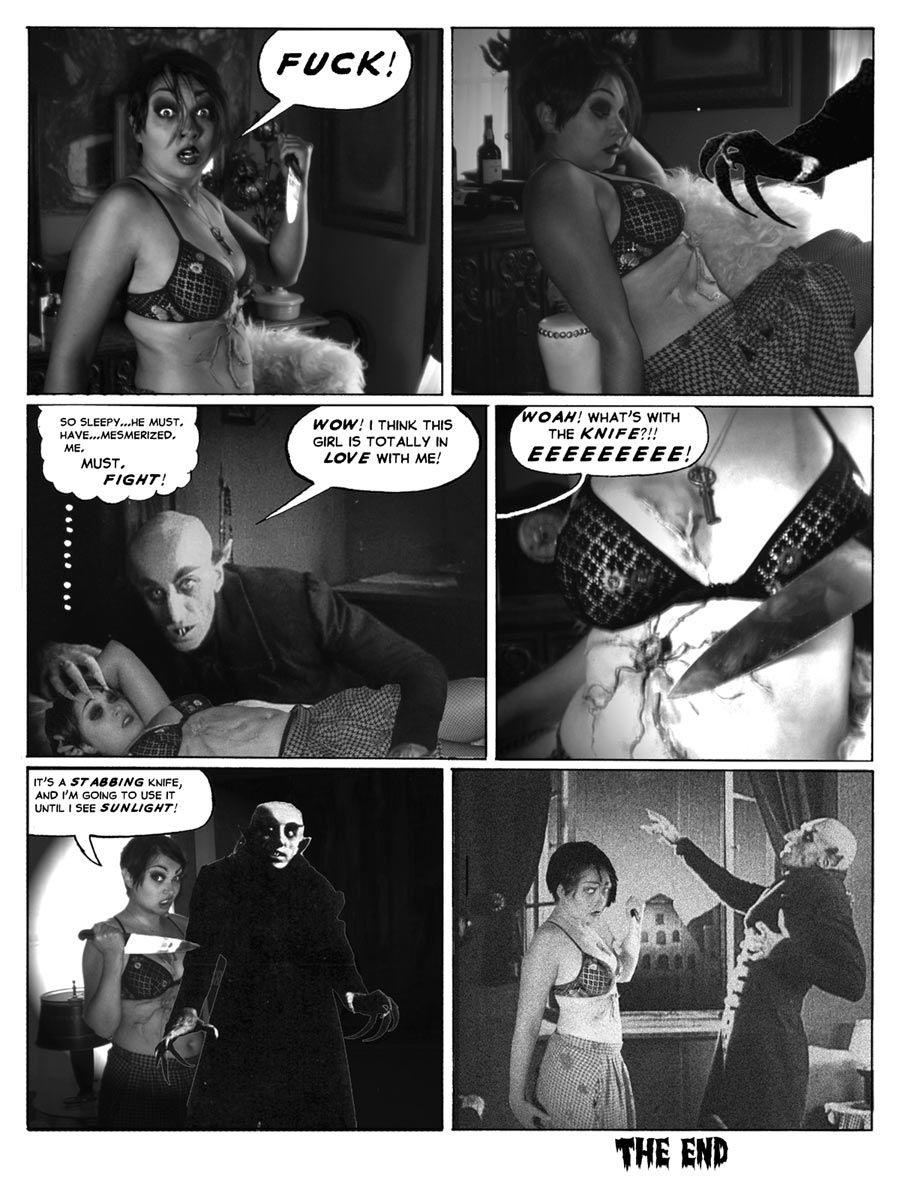A graduate of the Center for Cartoon Studies, Denis St. John has been publishing mini-comics for years -- most of them in his series "Monsters and Girls" -- and has just published his first graphic novel. "Amelia" is a horror tale first serialized in his mini-comics and appearing on his website. "Amelia" is a creepy, atmospheric story of three people and three objects, a Lovecraftian tale of body horror that ends in a powerful and heartbreaking manner.
If the publication of his debut graphic novel wasn't big enough, next month a short story that he co-wrote with Steve Bissette is coming out as part of the "Vampirella" Feary Tales" miniseries from Dynamite. St. John spoke with CBR News about his work, his previous life as a horror movie host and more
CBR News: Before it became a graphic novel, "Amelia" was part of your comic "Monsters and Girls," correct?
Denis St. John: I was thinking of "Monsters and Girls" as being my "Love and Rockets," and "Amelia" was going to be a story within that. The title "Amelia: A Monsters and Girls Book" is maybe a little confusing now, but that's how it started. I wanted it to be the first major story in this book of anthology pieces.
You were doing other stories and short work in "Monsters and Girls" in addition to "Amelia."
Yeah, I have a bunch of different issues of mini-comics that I always put the title "Monsters and Girls" on. I think everything I work on eventually works into those themes. It's not hard for me to think, "How am I going to fit monsters into this story?" It just happens.
What was it about attending Center for Cartoon Studies that really helped you? Was it the practice, discipline, just being around other cartoonists?
It was everything. It was being taught by James Sturm and Steve Bissette and Jason Lutes. It's in Vermont, in this really small town, so there's nothing to do but draw comics. You really bond with your classmates, and then we all help each other and encourage each other. You get to focus on comics. The first year is all about training, it's your bootcamp, and the second year you're supposed to have the skills, so you have your thesis to do. You're given a studio space, and so you have your space and time to work on your book without the interruptions of the real world. [Laughs] It's a very focused time.
After I graduated, I stuck around there for years so it became my normal. Now that I'm closer to the real world, it's still a little weird to me that I can't just have conversations with everybody I meet about comics. [Laughs] Or if I go to a bar with a sketchbook to work, people want to know what it is and they ask me questions. I'm like, doesn't everybody just a bring a sketchbook wherever they go? [Laughs]
Where did the idea for "Amelia" begin?
There were a lot of competing ideas that got merged into "Amelia." Before that, I had done mostly comedy horror and I wanted to do something that was capital "H" Horror. It's still got humor in it. I think I'm a funny guy, so I think the humor is always going to be there, but [I wanted] to focus on making something creepy. I had all these different ideas about the main character. I wanted her to be a femme fatale, someone like a film noir or silent era lead and doing the things that a femme fatale or vamp does, like seducing and destroying men -- but for her to be the good guy in it. That's how the story got shaped, originally.
I was also interested in beginning a story with a shocking and weird sex scene. Then, all of my influences get filtered through that. I wanted it to feel like a '70s Giallo and to look -- as much as I had the capability of drawing -- like a Hernandez Bros. story. Everything I wanted in a story I tried to push into this frame. Then, personal stuff comes into it. The main character's brother, Sammy, who looks like a Nosferatu, is very much about my real life struggles with my brother who's schizophrenic. It's not like I was 100% aware of all this stuff at the time, but once I become aware of it, it's like, "Oh, this is where I'm going with it. This is how I'm going to shape it." Sammy's physical deformities become this weird metaphor for my brother's mental state that I'm having to deal with and hope he gets better. It's putting a lot of my hopes for someone to heal on this weird character. All these weird things start to shape the story.
That makes a lot of sense, because, not to give anything away, but the brother shows up, claiming to be there or one reason, but it's another. His perspective of events is changing a lot.
Some people have said that my characters behave really irrationally -- and they do -- but it all makes sense to me. That's how people in my life behave, sometimes. Their whole attitude can switch within a couple minutes.
The character do behave irrationally, but like a lot of horror stories or thrillers, this is a story about obsession.
Yes -- obsession, transformation, destruction, personal destruction...
Could you talk a little about the story's atmosphere, because you seemed really focused on how to convey it, and finding different ways to do that throughout the book.
One of my little obsessions when I'm writing and drawing is trying to create a good sense of timing and rhythm in the book. A lot of that is silent panels. I'm trying to not ever crowd my page too much. That sense of slow rhythm, I think, adds to the atmosphere. The visual atmosphere is influenced a lot by Charles Burns and things like the movie "Night of the Hunter" and how that movie is lit. I think a lot of cartoonists, if they're going to working in black and white need to be looking at black and white movies for how to deal with black and white. Don't have it look like it should be colored in later. Use that black. When I was working on this, I started using a nib and I was really obsessed with cross hatching. Then there's a point in the book where I switch to a brush, and my obsession slowly becomes dry brush. That creates a visual atmosphere of a cloudiness to the story that I think goes both into the art and the writing. A fogginess to it.
The plot of the book is about these three objects -- the knife, the tablet and the box.
The surface motivation is these things. That, to me was about creating simple shapes. A triangle, a cube and a rectangle, and they have a circle in the middle. Those are really simple design shapes. They're just the way into the story and into the characters. Because it took me about five years to draw the whole thing -- because I was working and living life and trying to draw other comics at the same time -- I was living with these characters for a long time, and they started to become very real to me. I could put them in a situation and they would fill out the rest for me.
The objects function as a MacGuffin more than anything else.
Yeah, that's how I saw them. They're the MacGuffin and the gateway to the more Lovecraftian realms. Lovecraft names everything and goes into the deep horrors of it all and I don't do that. In this world that they're in, I'm as much of an observer in it as them. When somebody gives a theory about what it's all about, to me, that's just a theory. It's not necessarily true. There's a point later in the book where the character, The Mustache Man, says, 'You are the box, I am the tablet.' To me, that's not correct. It's him being misogynistic and delusional, defining a human being as a box. [Laughs] That's his disgusting behavior more than it is a well-rounded theory about this universe.
His whole theory is that he has all the knowledge, which is obviously untrue. But you also get into sex and body horror in the book in a way that's Lovecraftian but not misogynistic.
Sex is a big, recurring theme in the book. I began the story with a big sex scene that is weird but I also wanted it to feel like a real sex scene. I wanted the sex in the book to have some sort of weight and feel real. Also, the scene begins one way and it ends another way. I wanted to take the reader on a journey. How they feel about it in the book should change, hopefully. If you're into it in the beginning, you should maybe feel gross about that later. If there was going to be sex and titillation in the book, I wanted for it to be a meaningful part of it. If it's in the book it needs to be in there. Those are the major turning points in the plot. Paul Schrader, who did the remake of "Cat People," said, when people are expecting violence, give them sex, and when they're expecting sex, give them violence. I feel like that applies to my book.
Not to give anything away, but the big finale of the book is this fight scene / sex scene / body horror scene.
Yeah, it's getting deep into the body horror. Steve Bissette described it as sex with entirely made up organs.
That scene really gets into that tension between sex and violence and the utter uncertain of what's happening and what you as the reader want the outcome to be.
I needed the book to have some sort of basic structure, but I was hoping that people wouldn't know where the ending was heading, even though it's a story where everything is set up. Steve Bissette was my mentor and advisor through a lot of this process of making it. There's a point where I had given him the thumbnails, but then, when I gave him the finished book, enough time had passed that had passed that had kind of forgotten the end. He was like, I can't believe it's going to turn this way, and then he turned the page and it shocked him. Without giving anything away, the last four pages are a series of what could be endings until it eventually ends.
You mentioned that you wanted Amelia to look like a femme fatale or silent film star, and I kept thinking of Louise Brooks.
Yeah, Louise Brooks or Theda Bara. She starts off the book looking more like a normal person than when it ends. There's a physical and mental transformation that happens when you're around these objects. For some, you become a Nosferatu. Amelia starts the book wearing a hoodie and looking like a person you would interact with in the normal world, and she ends as a vamp.
I'm sure you weren't going for this comparison, but I was thinking of Black Canary, who has the bustier and fishnets. In comics, whether superhero stories or horror stories, we're used to this idea of transformation, and this is a horror story that has some non-horror elements.
I wasn't purposely trying to make people think of a DC character, but, yeah.
She doesn't start out as a passive character, but it's a moment when she is becoming more active in her own mind -- even if she's not in control of her own mind.
No, there's no control. There's the illusion of control. When you have a flowery fungal chest infection, who knows if you're in control of your own body or not. [Laughs]
You mentioned that you're still making more "Monsters and Girls" comics, but do you have plans to do more with the characters who are still alive at the end of the book?
I actually have an entire sequel idea that came to me while I was finishing the book. I don't want to give too much away. It takes place years after. One of the basic ideas in the book is that there's only three objects, but this would set up that, who knows how many there are? This would be a high schooler transforming and -- I can't give much more away. I do want to do more with these characters.
I'm actually thumbnailing a story right now involving Sammy that doesn't take place necessarily in the continuity of the story. It's him returning as a character and interacting with these vegan werewolves, the Failwolves, who are characters my friend Betsey Swardlick draws and creates, so it'll be a crossover comic for us. It's just about them at an all night diner and Sammy being obnoxious and bugging them and asking them personal werewolf questions because he invades people's privacy. A lot of that writing process involved me sitting down and trying to come up with vegan-related monster puns. I'm still working on that.
What else are you working on?
I've been working on short stories. I co-wrote a Vampirella story with Steve Bissette that's coming out in November for the "Feary Tales" series. That's my first mainstream comic distributed through Diamond. I'm really pumped about that because Steve and I wrote the weirdest thing we possibly could. [Laughs] We just added layer upon layer of weirdness to it.
Other than that, mostly short stories for right now. I have another comic called "Legend of the Loup-Garou," which is a Cajun werewolf myth. I have another book called "Monsters and Girls Sampler," which you can buy on my website, which is three short stories and a bunch of illustrations. For the past year I've been doing a lot of illustrations for this magazine "Monster!" It's just monster movie reviews and I've been enjoying just doing straight up illustrations.
I have to ask, what was it like being a horror host?
It was ridiculous fun! [Laughs] It was in a college town. We did midnight shows live every week. I did it for two years or so before moving and the show went on after I left for a good number of years. We did really cool things. We made secret prizes every week. One of the guys who ran it came from a monster makeup background, so he created a real monster face for himself for a character called Doctor Calamari. He could do things like, we did live surgery a few times, pulling guts out of people and finding a weird joke in there. It was a lot of fun. But sometimes it was genuinely humiliating because I'm wearing a crazy costume. We sometimes would be going out into the bar crowd to promote the thing, and you're in a college town and dressed crazy. We had an angry veteran almost try to kill me one time, 'cause he took offense to me. That was a scary moment in my life. [Laughs] The other thing we would try to never do was break character, so if a guy is yelling at you and you're still trying to be an idiot, it just makes things worse. [Laughs]
It's Halloween, so why should people pick up "Amelia?"
If you want a story to read at night and to not feel like it's going to feel safe when you go to bed afterwards -- this is the story. Everything you could want I tried to cram it all in there. It's got monsters, it's got girls -- what else is there? [Laughs] It's got everything from Lovecraft to Oscar Wilde stuffed into this weird book.

